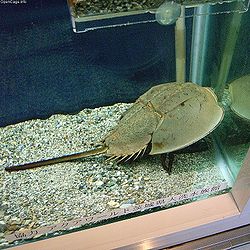| Tachypleus Temporal range: | |
|---|---|
 | |
| Tachypleus tridentatus | |
| Scientific classification | |
| Kingdom: | Animalia |
| Phylum: | Arthropoda |
| Subphylum: | Chelicerata |
| Order: | Xiphosura |
| Family: | Limulidae |
| Genus: | Tachypleus (Leach, 1819) |
| Synonyms | |
HeterolimulusVia Boada & Villalta, 1966 | |
Tachypleus is a genus of south, southeast and east Asian horseshoe crabs in the family Limulidae.